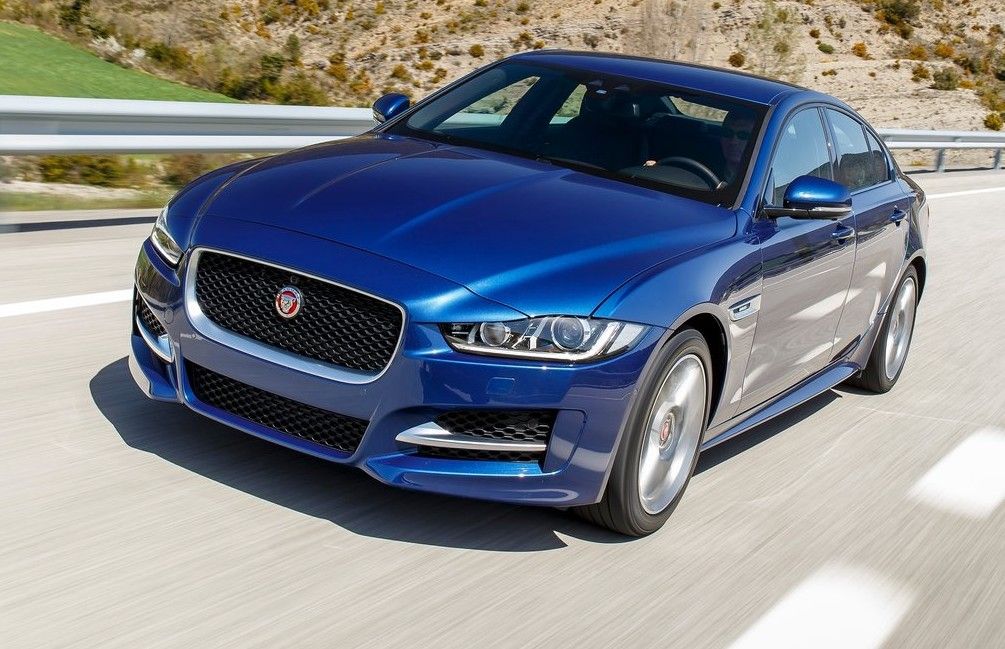Resurrection: Jaguar Lightweight E-type
Modified On Feb 20, 2015 10:24 AM By Abhijeet
- 1.2K Views
- Write a comment
As far as classic cars are remembered, one name will surely get all the petrol heads around the globe misty eyed, the absolutely gorgeous Jaguar E-type. The icon, the legend and the maestro, E-type is the true expression of a bedroom poster across all centuries.

It is not often that an icon of such epic proportions gets recovered from the pages of history to see the modern day light, but be thankful to the Jaguar Land Rover Special Operations team sitting somewhere in the UK to pick up the responsibility. Although assigned to a measly number of just 6 units, I am thankful they will walk the earth at all.

The legacy
Back in 1963, the objective was to create 18 cars from the ‘Special GT E-type’ project. Only 12 of the aluminium-bodied Lightweight E-types saw the daylight, and the rest six designated chassis numbers got lost in time.

All these new six samples are actually the ‘missing’ cars to carry those original chassis numbers. Every one of the six samples will be built on the specification base of the Lightweight E-type manufactured in 1964. The Browns Lane plant in Coventry, England, will again see the midnight oil burning to hand-build the legend.
Lightweight body
The key highlight and the only concept around which the Lightweight E-type is honed is ‘lightness’. This meant replacing parts from the whole body with aluminium, instead of steel, shedding a very noticeable 114 kilograms from the standard E-type.

The engineers made a complete scan of the original body, observing its dimensions and shape down to the next millimetre. This gave them the complete picture on how the body was assembled in the 1960s, and filter it to provide the highest quality structure for the new project.

With an insight on 230 individual body components, they were carefully optimised and the data was then sent to the tool room at Jaguar’s Whitley engineering centre for production. The engineering centre made 75 percent of the panels in-house and the rest few were sourced from external specialists.

The secret internal document called the ‘grey book’ was consulted to align quality standards with regards to body shell fit-and-finish, thus ensuring immaculate built quality for the six new Lightweight E-types.
Design
The project sits in the careful hands of Jaguar’s Advanced Design Studio who will be responsible for creating the apt trim levels, materials selection and colour finish for the new car. Connolly leather, by Jonathan Connolly, has been chosen to supply the hides for the trim.

The company provided the same specification leather used by the company for its cars in the 1960s. The Connolly leather will be used in the competition-type aluminium bucket seats and the centre console, with the option of seven colours.

As the name suggests, lightweight is the key parameter at work in the E-type. The use of real trim inside the vehicle is kept at minimum in its standard format. But customers will be getting the option for a more trimmed car by request to the Jaguar trim department, including door cards, headliner for the hardtop, removable custom saddle-leather floor mats, and a cover for the transmission tunnel.

“With the Lightweight E-type, our focus as a design team has been to ensure justice was done to the original work of Sir William Lyons and Malcolm Sayer. Meticulous attention to detail has been everything to us in re-creating this car, just as it is in our contemporary Jaguars. I believe the result is a new Lightweight E-type that is as stunning now as the originals would have been when they were new”, says Ian Callum, Director of Design, Jaguar. Sticking with the theme, the floor-pan, sills and rear cabin areas have been left unpainted, greeting occupants with the car’s aluminium bodywork and some welds.

Engine and transmission
In 1963, when the original came out, at its heart sat a heavily engineered version of Jaguar's straight-six XK engine which. Ahead of its time, the engine featured chain-driven twin overhead camshafts and aluminium head with hemispherical combustion chambers.

Compression ratio is set at 10:1 and modern car gets three 45DCO3 Weber carburettors. But customers may swap them to a Lucas mechanical fuel injection system, at a price obviously. Whether one chooses carburettors or fuel injection, power levels sit above 300bhp and the torque generation is 380Nm peaking at 4,500rpm.

The engine is a delight to play with, providing quick acceleration from relatively lower engine speeds, a tradition if you will among Jaguar racing engines. The drive is transferred to the wheels through a traditional single-plate clutch system mated to a Jaguar close-ratio 4-speed all-synchromesh manual transmission.

Think about it for once, a rare selection of six customers will be driving in a brand new Lightweight E-type Jaguar that has been meticulously built at Browns Lane. Jaguar has held nothing back for the allocation of resources for these six to be built at the highest quality standards. As correctly stated by John Edwards, Managing Director, Jaguar Land Rover Special Operations, “The E-type is an iconic car, and the Lightweight E-type the most desirable of all”.

0 out of 0 found this helpful










